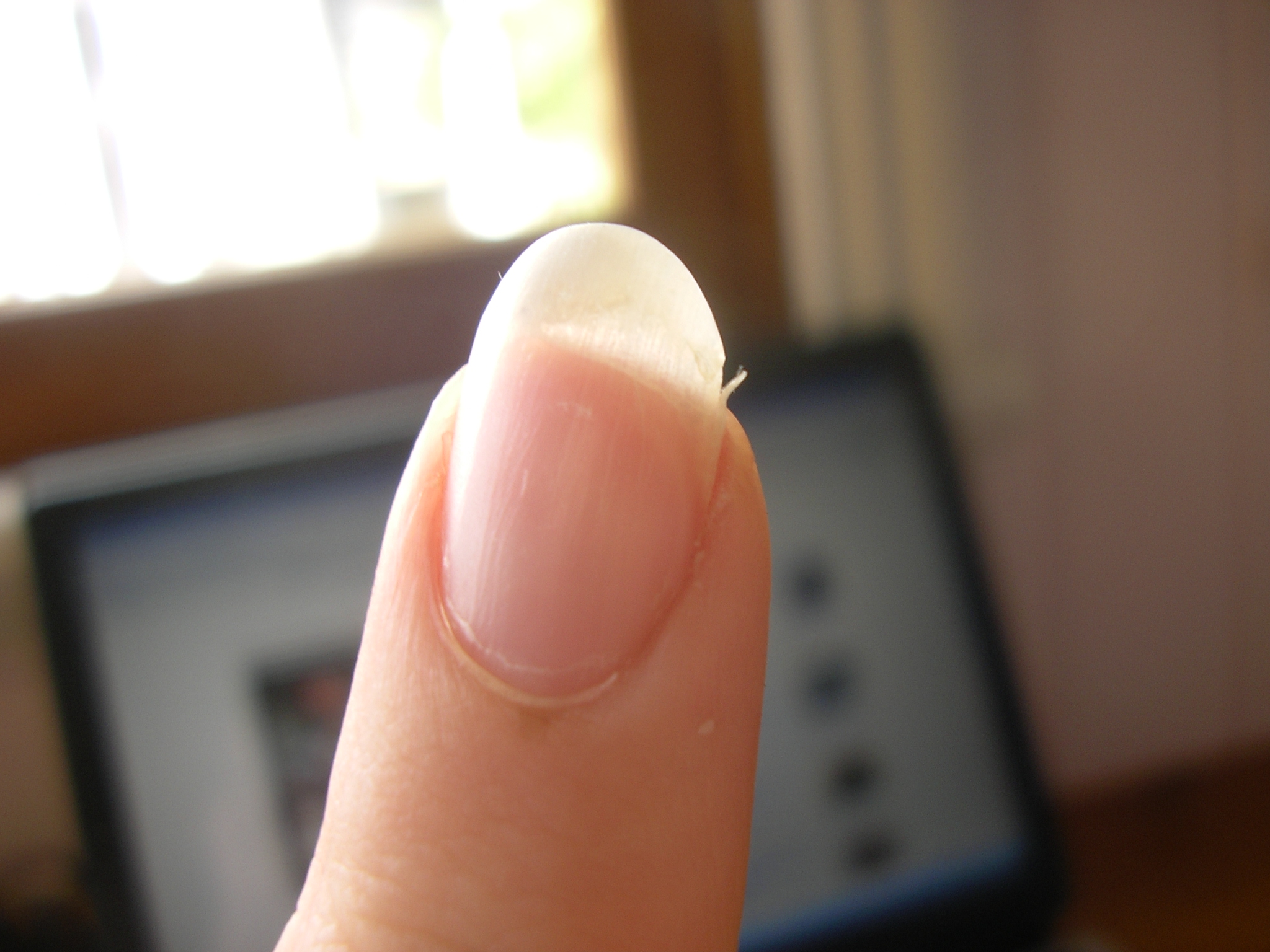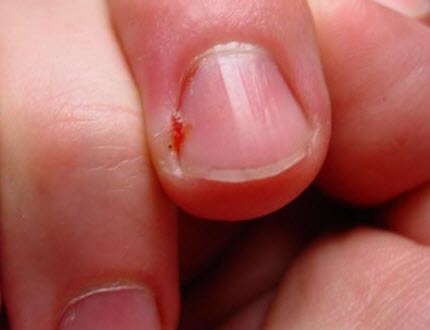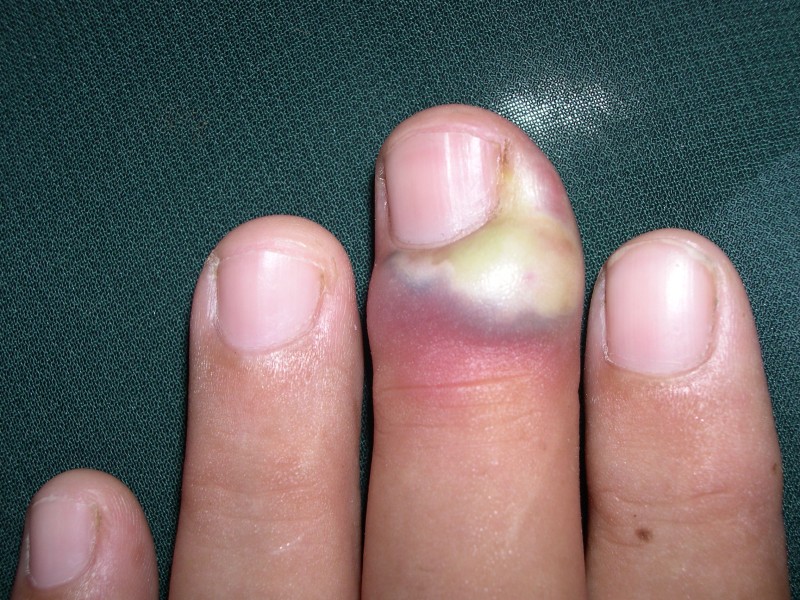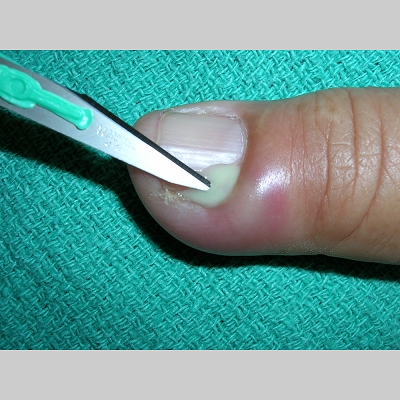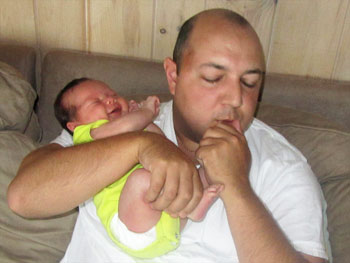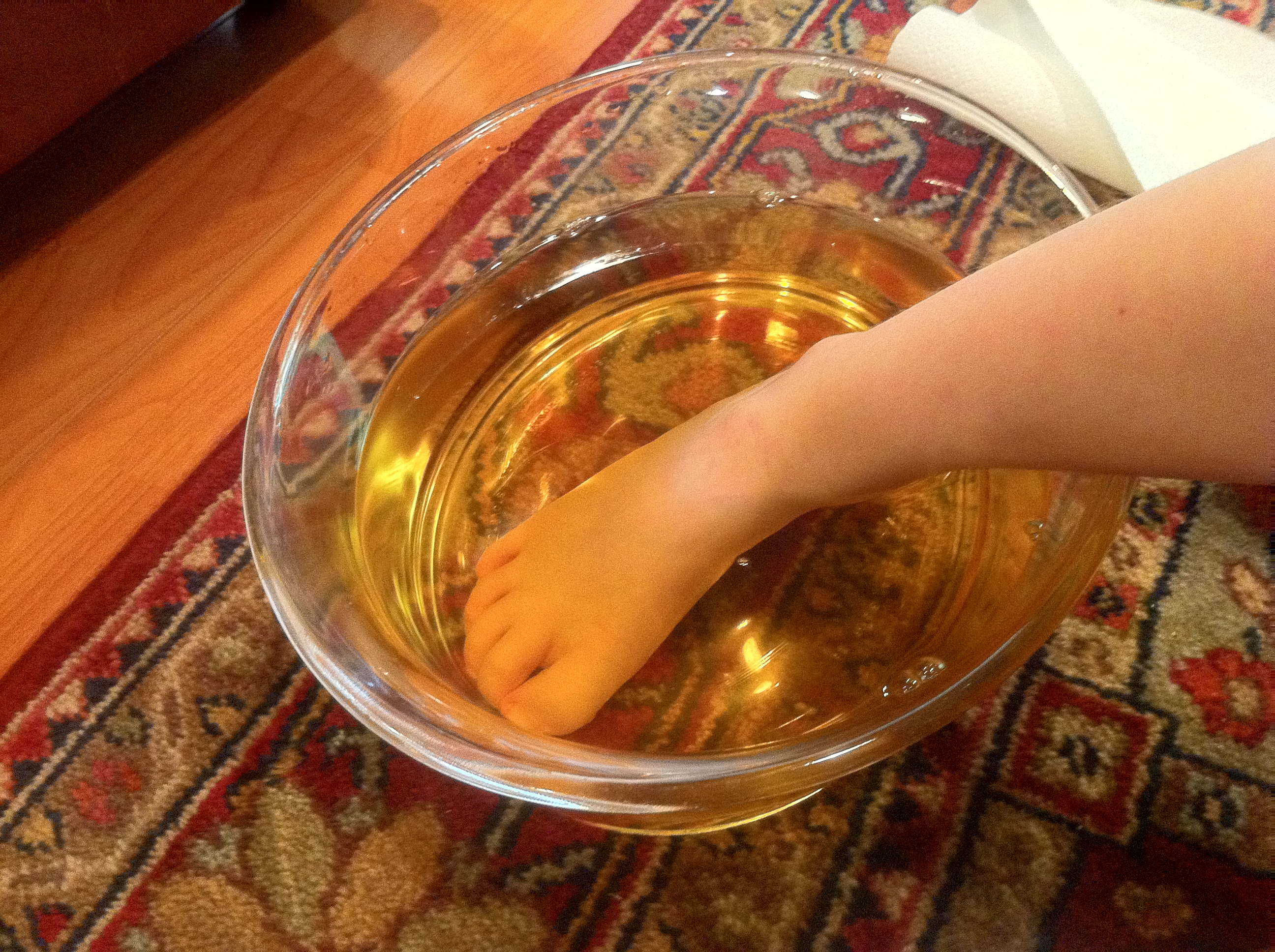Aren’t hangnails annoying? Well, it gets worse. The things we do in an effort to get rid of them cause even bigger problems, and that’s the focus of this Straight, No Chaser.
We’ve previously discussed the dangers of human bites. Every time you nibble on your fingers or bite off a hangnail, you’re potentially planting the seeds of a bacterial, yeast or fungal infection in your finger (depending on what’s in your mouth or on your hands); such an infection is called a paronychia. Paronychia can be caused by other types of injuries to the area around your fingernails, such as the manicures you can’t do without (in this example, the specific problem is cutting or pushing back the cuticles).
You likely already know how these look. They resemble a less violent version of an ingrown toenail, with pain, redness and swelling at the involved area of the finger. More severe infections can also reveal pus-filled mini-abscesses and can cause changes to the color or shape of your nails. If you’re very unlucky or have a reduced immune system (e.g., diabetes, HIV, chronically on steroids) the infection can spread to your tendons, bones or bloodstream.
Given that treatment of these can involve use of antibiotics or the need for an incision and drainage procedure (as is done with other abscesses), you might want to avoid that pain and follow these tips for prevention and treatment.
To prevent paronychia:
- Wash your hands to keep unwanted bacteria, yeast and fungi off your hands. That’s a pretty good start.
- Don’t bite or pick your nails.
- Use gloves when they’re available. If you’re working with detergents and chemicals, these substances damage the nails and fingers.
- Speak up and forbid the use of any manicure tools that aren’t new or newly sterilized. If you don’t see the tools coming out of the bag, you’re introducing risk to your hands.
- Say no to getting your cuticles cut. All that does is help unwanted microorganism enter your body. It’s even worse when blood is expressed from a cuticle cut.
In general, good nail care can prevent the hangnails that initiate many of these problems. Trim your fingernails every week and your toenails about once a month. Trim your fingernails with a slightly rounded edge, but your toenails should be cut more straight across. Always leave some of the edge of the nail (the white portion) intact. Use an emery board for smoothing the edges. You’re less likely to cause damage if you trim your nails while wet, such as after bathing or showering.
If you have pain, redness and swelling after manipulating a hangnail or biting your fingers or toes, soaking your nail in hot water two to three times a day can help reduce swelling and pain. If things don’t get better, or if you develop fever, chills, joint or muscle pain or see an extension of the area of redness, these are clear signs that you need to see your physician.
Thanks for liking and following Straight, No Chaser! This public service provides a sample of what 844-SMA-TALK and http://www.SterlingMedicalAdvice.com(SMA) offers. Please share our page with your friends on WordPress. We are also on Facebook at SterlingMedicalAdvice.com and Twitter at @asksterlingmd.


